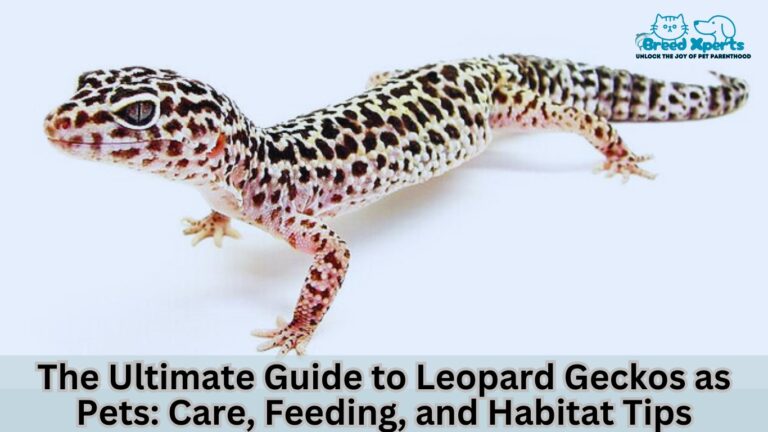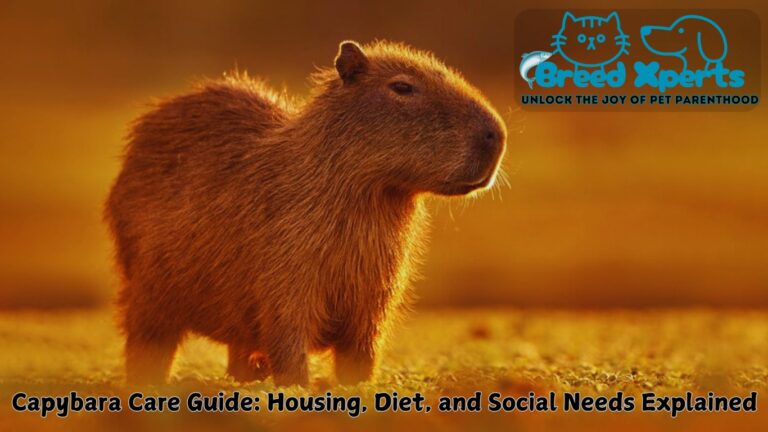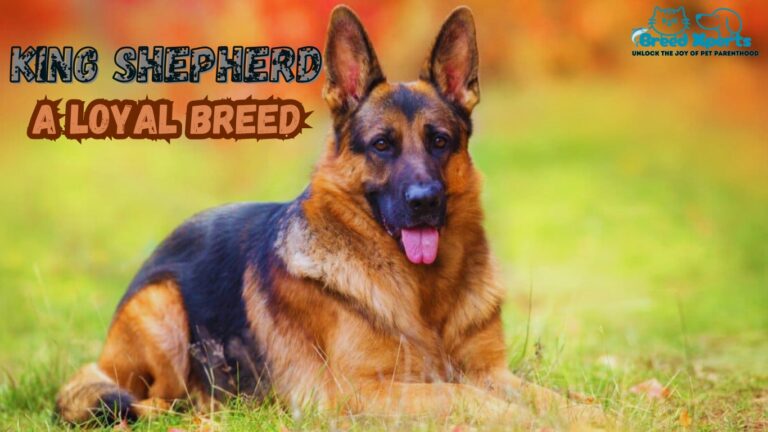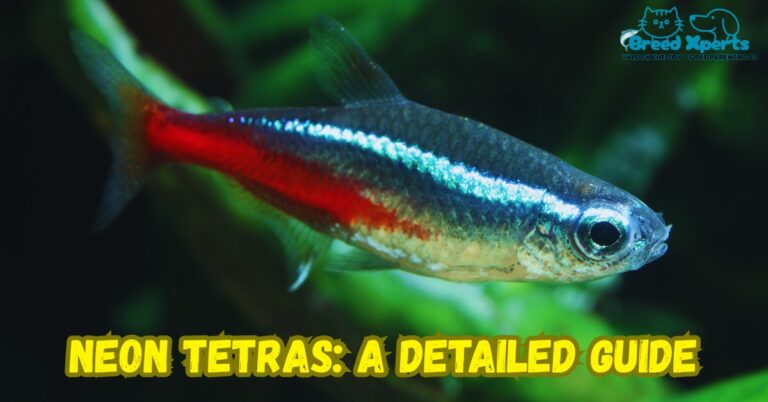Are Ragdoll Cats High Maintenance? 10 Fascinating Facts About This Gorgeous Feline: A Complete Care Breakdown
Ragdoll cats are large, beautiful, and affectionate cats. They possess soft, fluffy coats and bright blue eyes. People love these cats due to their calm nature and attachment towards humans. Because of the way they go limp like a ragdoll when picked up, this is the kind of cat known as the Ragdoll, but they love cuddling so well that they are happy sitting across your lap for hours.
Ragdolls are smart and may be taught to fetch toys and other things. They are friendly and love moving around with the owner from one room to the other. Ragdolls differ from other felines in their preference not to spend much time alone. Such cats get along well with kids and other animals, so it is a family cat.
Such cats need good brushing quite often to keep the fur soft and without tangles. They can be house cats because they are just too social to take care of themselves outdoors. So, if you want an affectionate and very adorable companion, go with a Ragdoll cat!
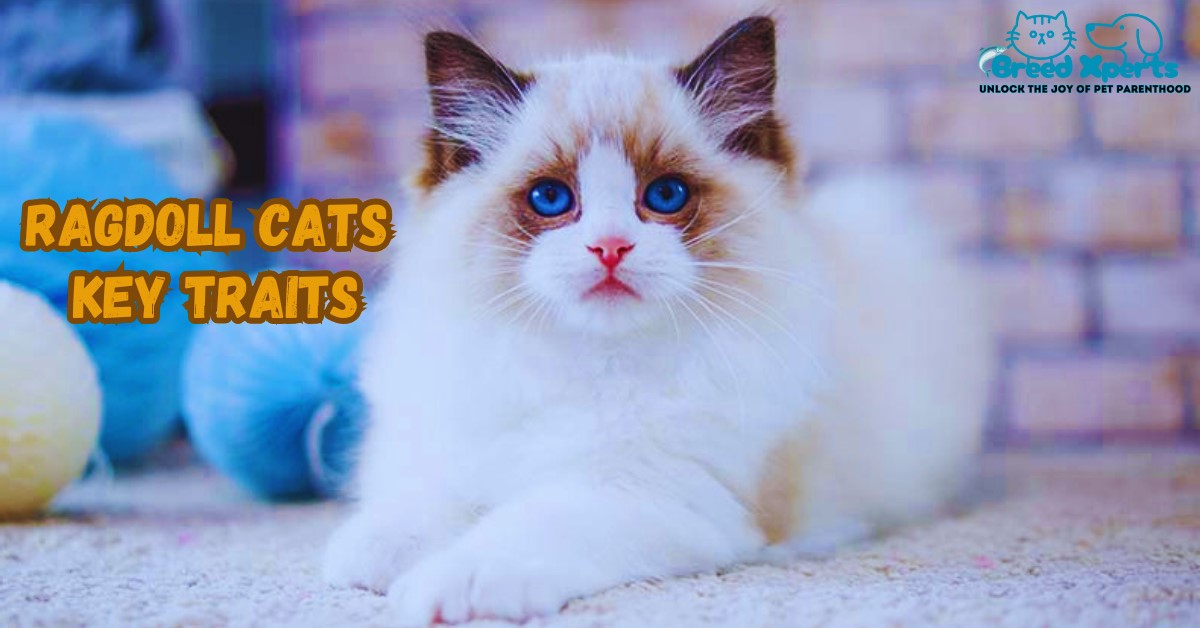
Key Traits: Ragdoll Cats
- Group: Large Domestic Cat Breed
- Height: 9 to 11 inches
- Weight: 10 to 20 pounds (males are typically larger)
- Personality/Temperament: Affectionate, gentle, social, and laid-back; known for their “floppy” nature when held
- Energy Level: Moderate; playful but enjoys lounging
- Coat and Color: Semi-long, silky coat; colors include seal, blue, chocolate, lilac, red, and cream with patterns like colorpoint, mitted, and bicolor
- Life Span: 12 to 17 years
- Other Traits: Blue eyes, minimal shedding for a long-haired breed, good with children and other pets, thrives on companionship
Are Ragdoll Cats High Maintenance?
In comparison, Ragdolls are generally regarded as cats needing moderate upkeep. They adore and are incredibly versatile despite requiring constant grooming, care, and an acceptable diet to sustain their health and happiness in life.
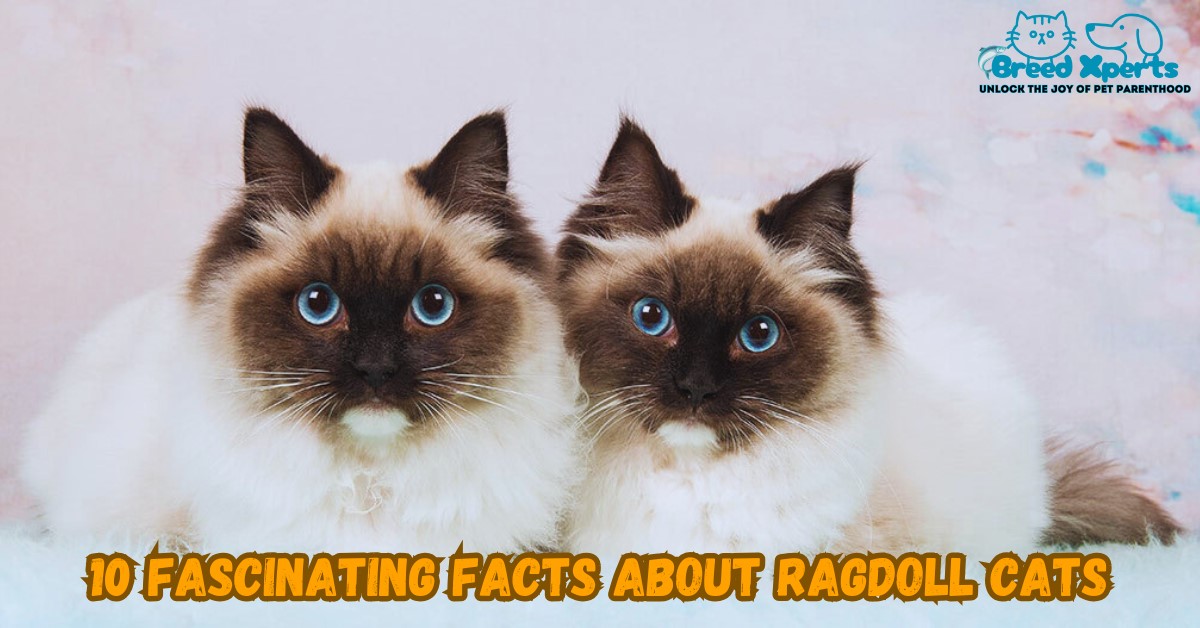
10 Fascinating Facts About Ragdoll Cats
- They Are Large and Sturdy
There are the very largest domestic cat breeds, although male Ragdolls weigh between 15 and 20 pounds and females are a little lighter, ranging from 10 to 15 pounds. - They Have Stunning Blue Eyes
One very interesting feature associated with Ragdolls is having dark blue-colored eyes, lending them an appearance almost like pure magic. - They Are Exceptionally Affectionate
Ragdolls are often nicknamed “puppy cats” as they love to follow their masters around, like being cuddled, and just enjoy human companionship. - Their Coats Are Semi-Long and Silky
Whereas other long-haired breeds can mat easily, Ragdoll coats resist matting but still require weekly brushing for a smooth and healthy coat. - They Are Slow to Mature
Ragdolls take between four years of age to be fully grown and to have a full coat of fur. - They Are Indoor Cats
Ragdolls best thrive indoors, as they don’t have city sense and easily trust everyone. They are most vulnerable to all outdoor dangers. - They Have Unique Color Patterns
Ragdolls are available in numerous colors and patterns, colorpoint, mitted, bicolor, which may be sealed, blue, chocolate, lilac, etc. - They Are Not Very Vocal
Ragdoll cats differ from Siamese breeds as Ragdolls only meow to let one know of their wants and, when they do speak, they are very soft and gentle. - They Have a Laid-Back Temperament
These are extremely quiet and soft cats and can be the perfect pets for a household that includes children and other animals. - They Require a Balanced Diet
These are big cats, so a diet rich in protein is used to provide body mass and all-around well-being.
Breed Overview
Large in size, big in the affectionate and gentle soul, the coat is smooth to the touch; the eyes sparkling bright blue is the Ragdolls. Well known for having a calm loving nature, such cats love going around people following their owners anywhere in the house.
These are amiable cats that are approachable. They behave well with the children and with other pets also. Ragdolls like being held, get relaxed, hence they are referred to as “Ragdolls.” The Ragdoll would prefer staying in the house only and would expect a home without any form of disturbance.
Raising a ragdoll involves regular grooming to keep the fur soft and prevent tangles. Generally, this breed is healthy but might experience heart or kidney problems.
Diet & Nutrition
Ragdoll cats require a balanced diet to remain healthy. Feed them high-quality cat food with protein as the first ingredient. Avoid fillers such as corn and wheat. Provide fresh water daily and limit the amount of food given to prevent overeating and obesity.
Consider food dry and moist within their diet. Moist food hydrates the body, while the other one maintains dental hygiene. Allow a little bit of pampering at times but not too much. Some Ragdolls might be prone to food allergies, so watch for digestive issues.
Allow them food at regular time intervals so that they get accustomed to it. Feed them foods that are vitamin and mineral, which will help them grow stronger bones and obtain a glossy coat. Consult the vet for the proper diet plan. The right diet makes Ragdolls lively and happy.
Lifespan
Proper care extends the life of a Ragdoll cat to between 12 and 17 years. Some live up to 20 years. Nutrition, exercise, and regular veterinary checkups contribute to their longevity. Indoor confinement prevents injuries and diseases that would otherwise shorten their lifespan.
A nutritious diet and consistent grooming keep Ragdolls vibrant and content. They require plenty of love and care to ease the stress. Constant playtime keeps them active and reduces the chances of obesity, which might reduce their lifespan. Cognitive stimulation is equally important.
Frequent health issues with Ragdolls are heart diseases and kidney diseases. Regular checkups at the vet can help the animal overcome the conditions. Provided with proper care, love, and attention, Ragdolls can have a long happy life as lovely companions.
Size
Ragdoll cats are large and powerful. On average, males are 15 to 20 pounds, while females are lighter and weigh between 10 to 15 pounds. They grow at a slow pace and reach full size at the age of around four years. Their long, stretched bodies create an illusion of greater size.
These cats have powerful legs and a bushy tail. Their silky, luxurious fur makes them look big. Though they are large, Ragdolls are cuddly and love to snuggle. Their big blue eyes and laid-back posture make them all the more attractive.
Due to their massive size, Ragdolls need sturdy cat trees and roomy litter boxes. Also, the right kind of diet goes a long way in their growth support. When placed under proper care, these large bodies endure and stay healthy for many years.
Habitat
Ragdoll cats are most content in a peaceful and warm place. They opt for indoor dwellings since it will save them from dangers like moving vehicles and wildlife. A calm, nurturing ambiance helps them keep calm and tension-free. They prefer soft mattresses and warm spaces.
These cats love the company of their owners. They follow people from one room to another and like sitting on laps. Ragdolls need scratching poles, cat towers, and playthings to keep them active. A sunny place by the window is ideal for them to rest and observe what is going on outside.
Ragdolls don’t want to spend extensive periods alone. They crave company and attention. Multiple pets home or someone who takes considerable time off with them make their house a comfortable warm and happy abode.

Characteristics
Ragdolls are massive, affectionate, and sweet cats. They have sleek, soft coats and bright, sparkling blue eyes. They become great lap cats with their easy-going nature. They love people and are known to follow their owners around the house constantly in search of attention and cuddles.
They are sociable, and amiable, and have an excellent relationship with children, cats, and sometimes dogs. Their usage of the claws is negligible and are very calm-natured gentle and relaxing, as the felines become soft in someone’s hand thus are named Ragdolls because of their character of being quite limp.
Ragdolls are intelligent and able to learn tricks or sequences. They like playtime but prefer it when it’s peaceful. Due to their relaxed nature, it’s easy to take care of Ragdolls. With good care and affection, Ragdolls becomes a devoted and loving friend.
Behavior and Temperament
Ragdoll cats are sweet in temperament and love warmly. They are fond of other people’s company and often follow their masters from room to room. Unpredictably, unlike many cats, they enjoy being hugged and cuddled. They are very great pets for families as they are so kind and affectionate.
These cats are friendly and affectionate. They can be very friendly to children as well as dogs. Ragdolls rarely nip or claw during play. They have a pleasant voices and often speak in soft meows or purrs when happy.
Ragdolls love a peaceful environment. They do not like to be left alone for long periods. They love playthings that are soft and interactive. With affection and attention, Ragdolls bond with their owners and become loyal companions.
Housing
The living indoor life secures ragdoll cats safely; they prefer and love this security. Ragdolls appreciate cozy, serene rooms. Plush bedding creates an ideal resting atmosphere for a laid-back pet cat. Ragdoll cats prefer proximity to their humans.
These cats need an expansive space where they can freely roam. Ragdolls adore napping on cat trees, windowsills, or cozy nooks around the house. Providing them with scratching posts and toys helps keep them entertained and active.
Ragdolls dislike staying alone for long periods. They thrive in families where they will receive plenty of attention. It is good if you are away to have another pet for the ragdoll. With enough shelter, they feel satisfied and in good health.
Breed History
The Ragdoll breed was bred in California in the 1960s. There is a lady named Ann Baker who is known to have originated the breed. She bred a white Persian with a local barn cat, and the kittens bred were very distinctive.
The term is derived from their extremely laid-back nature. When held, they would become limp, just like a ragdoll. This sedate character made them highly desirable as loving and gentle companions. Over time, breeders were concerned with the breed characteristics.
The Ragdolls got official recognition in the 1980s. They were recognized for their bright blue eyes, soft skin, and tolerant personality. To date, they hold a prominent position among the most adored cat breeds worldwide, especially popular among families and lovers of animals.
Training and Care
Ragdoll cats are intelligent animals and can be taught basic tricks. They like encouragement, in the form of treats or compliments. Train early and keep training sessions short and fun. They love interactive play, which also helps them to learn.
These cats need to have their fur constantly groomed so that it can be kept clean and healthy. Their lengthy, smooth fur should be brushed two to three times weekly. Otherwise, knots will form, and constant brushing helps minimize shedding. Bathe them when necessary.
Routine veterinary exams will be essential in keeping the Ragdolls healthy. The breed may have certain health issues, so early detection is vital. They need a good diet and clean water. With proper care and attention, Ragdolls thrive as playful, happy friends.
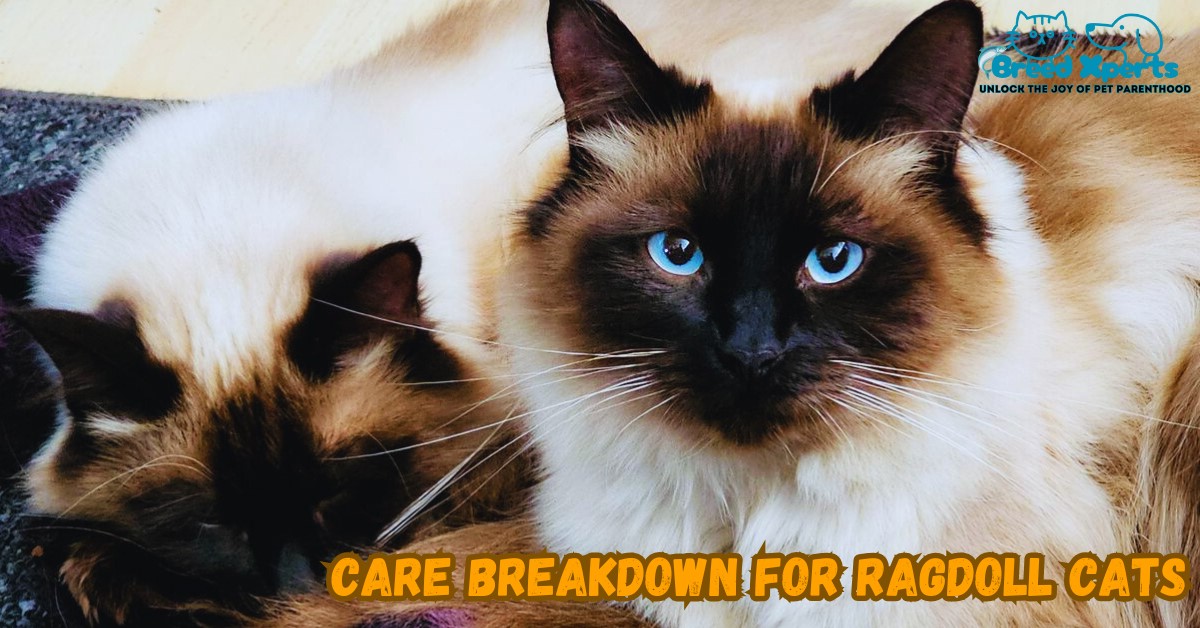
Care Breakdown for Ragdoll Cats
- Grooming: Brush 2-3 times per week to prevent tangles.
- Diet: High-quality protein food, portion control to prevent obesity.
- Exercise: Moderate activity; play with toys to keep them engaged.
- Litter Box Maintenance: Keep it clean, as Ragdolls prefer a tidy space.
- Veterinary Care: Regular check-ups to monitor heart health (as they are prone to hypertrophic cardiomyopathy).
- Companionship: Ragdolls thrive on affection and do not like being alone for long periods.
Health Problems
Ragdolls are pretty healthy animals overall, but as with all cats, they will face certain health issues. Probably the most frequent concern is HCM, which is a type of heart condition that could compromise longevity. Regular checkups at the veterinarian can detect possible early signs of heart problems.
Another disease is kidney disorder. Ragdolls are prone to disease of the kidneys, mainly when they get old. Food supplements and fresh water will help in keeping their kidneys fit. Sometimes, regular health checkups may expose them early enough.
Ragdolls are easily prone to obesity since they tend to have a great affection for food. Keeping them active and dieting is essential to their health. The closest monitoring of their weight can save them from joint problems and other health issues.
Appearance
Ragdolls are huge, fluffy, and beautiful. Their fur feels soft and smooth, like the coat of a rabbit. The physiques of these cats are powerful yet very relaxed, thus giving them a graceful look. They have long tails, and their large, blue eyes make them very fascinating.
These cats have the seal, blue, chocolate, and lilac color patterns. Their fur is lighter on the body and darker on the ears, face, paws, and tail. Some Ragdolls have a distinctive white “mitt” pattern on their paws.
The ragdoll kittens are all white initially, then acquire their colors in the process of maturing. Their coat is somewhat long and does not tangle easily. They have considerable size and gentle temperament that makes them appear to be soft and cuddly stuffed animals.
Population
The Ragdoll cat breed population is found to rise throughout the globe. Many feline lovers opt for them because they offer an affectionate attitude and appeal. The experts carefully bring them up and protect the cat’s health robustly. Such lovely felines in the United States Europe and several others are famous too.
Many are bringing Ragdoll cats into their homes each year. They are very good family pets because they are so gentle. Rarely is the animal shelter going to have a Ragdoll, but most are obtained directly from breeders. This will ensure that the population is healthy and free of genetic diseases.
Although ragdoll cats are less common than other breeds, the number of this breed is increasing constantly. Many people prefer these pets because of their amiable nature and soft coat. Hence, the increased demand for these cats forces the breeders to work hard for their pets to get loving homes.
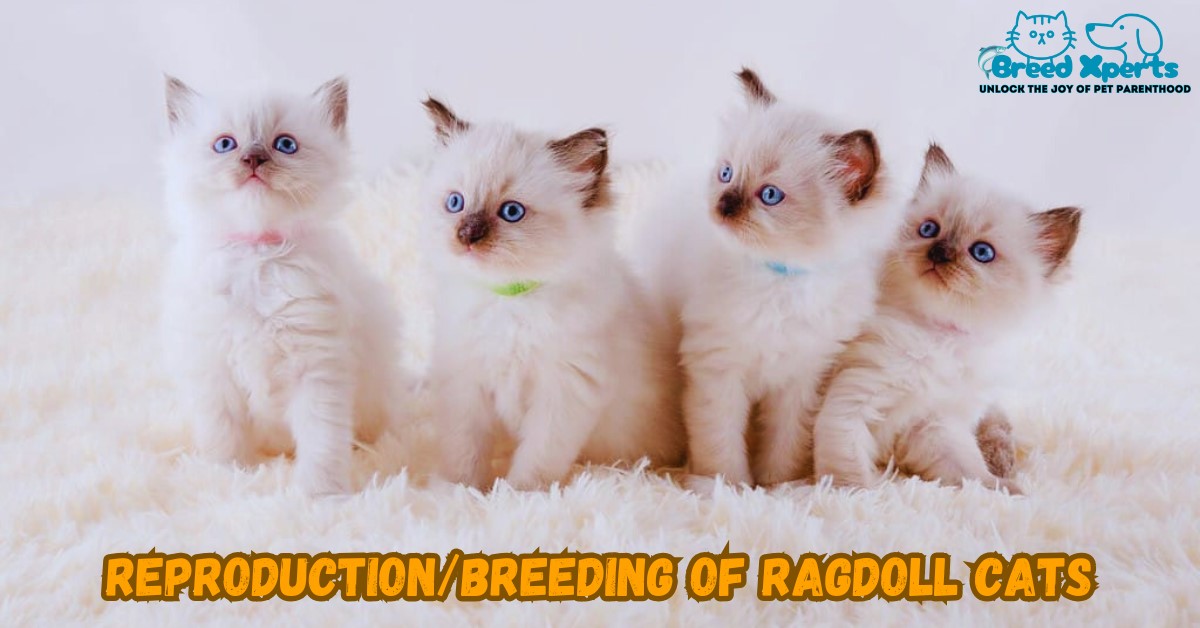
Reproduction/Breeding
Ragdoll cats breed by careful selection. Breeders pick healthy breeding pairs to produce robust kittens. The female Ragdolls usually give birth to 4–6 kittens in a litter. The kittens are white initially and get their colors in the first few weeks.
Breeders ensure that Ragdoll cats get mature before breeding them. This helps ensure the health of the mother cat and does not trigger problems. Reputable breeding ensures no genetic conditions and keeps the Ragdoll breed fresh. The kittens stay with their mother for at least 12 weeks.
Ragdoll kittens need proper care and socialization. Breeders vaccinate and evaluate their health before their adoption. Good breeders let kittens go to good homes. Their hard work is responsible for the Ragdoll cat’s gentle nature and good appearance.
Pros & Cons as a Pet
Ragdoll cats are excellent companions. They are gentle, docile, and love being around people. They love to snuggle and trail behind their owners. Their smooth, silky coat is pleasant to the touch. Ragdolls are calm and seldom scratch or bite, making them excellent for families.
Yet the Ragdoll has an ongoing demand for grooming as well. Without such grooming, its long coat mats easily, and it even loses fur on some parts which, for one’s allergic sufferers in the home can be rather bad. Despite these drawbacks, Ragdolls also like to get pampered or coddled a lot.
Ragdolls are generally healthy but need proper care. They can suffer from heart diseases or problems related to their bladder. Regular veterinary check-ups and a proper diet help them to maintain their health and energy. Despite these problems, their amiable nature makes them perfect companions.
Further Research
Scientists continue to study Ragdoll cats in order to have more information on their health and behavior. They focus on genetic diseases, diet, and lifespan. Understanding these factors allows breeders and owners to provide better care, keeping Ragdoll cats healthy for many years.
Researchers also observe the social personalities of Ragdoll cats. They are interested in knowing why the cats are so docile and loving. Research on cat behavior benefits owners to have a deeper understanding of their animal friends. Such knowledge can improve training and strengthen the relationship between cats and humans.
Future research may expose new ways in which diseases might be prevented within Ragdoll cats. Diet and exercise studies are bound to bring improvements in the quality of life of Ragdoll cats. As these cats continue gaining popularity, subsequent studies will enable them to become happier and better animals.
Interesting Facts
Ragdoll cats are extremely docile and affectionate in temperament. When picked up, they go limp, almost like a rag doll. They have silky coats and beautiful blue eyes that make them one of the most beautiful breeds.
These cats are white at birth. They change as they grow older. Their coats have color points, mitted, and bi-color patterns. Unlike most of the cats that hate being touched and cuddled, Ragdolls love these things. This breed of cats is known for following their masters around, pretty much like some dogs.
Ragdolls are one of the biggest house cat breeds. Their males can weigh up to 20 pounds. They are docile and rarely scratch anybody. For being so amorous, they prove to be wonderful companions for any family or kids.
FAQ:
Why are Ragdolls so expensive?
Pedigree animals are usually pricey because much money has been invested in their breeding. However sensitive you are to the price, the breeder is still losing money in real terms because they are running the business badly.
What is a Ragdoll person?
A weak, impotent creature, as in You won’t get a decision out of her; she’s like a rag doll when it comes to decision making. The word describes the limpness of a soft toy stitched together from rag ends for human behavior. [Mid-1800s]
Is Ragdoll a lazy cat?
The Ragdoll is probably no lazier than any other house cat. They look so comfortable lying on the couch that they get a reputation for laziness. They may not be bound like your other cats, but they have a pretty muscular body under all that beautiful coat.
What is so special about Ragdoll cats?
Ragdoll cats have a docile and amorous nature and can be regarded as ideal companions to families. Ragdolls prefer staying in company and mostly search for pets and affection from time to time. Ragdolls are highly emotional companions who empathize highly with human feelings.
What is the cheapest cat?
- Manx $500 to $800.
- Himalayan $300.
- Cornish Rex $100.
- Oriental Shorthair $400 to $500.
- Havana Brown $300 to $1,500.
- Snowshoe $200 to $250.
- Domestic Shorthair <$50.
Which Ragdoll is rare?
The most exotic of the old Ragdoll colors, lilacs are a pastel blue, icy grey points with a trace of pink to them.
How long do Ragdolls live?
Ragdoll cats reach their maturity at about the age of four. They generally live for around 12 to 17 years. That being said, a Ragdoll lives about 14 to 15 years on average.
Is A Ragdoll a dog?
The Ragdoll is one of a kind when talking about cats due to its colorpoint fur and blue eyes.
Are Ragdoll cats deaf?
They aren’t Deaf
There is a common misconception that ragdoll cats are highly subject to inheriting deafness. According to Cornell Feline Health Center, this is not so.
Are Ragdolls aggressive?
Generally, Ragdolls are among the least aggressive cats on the market.

